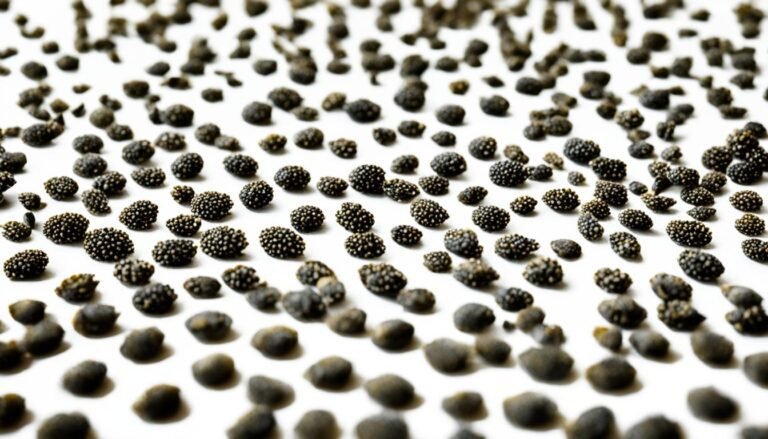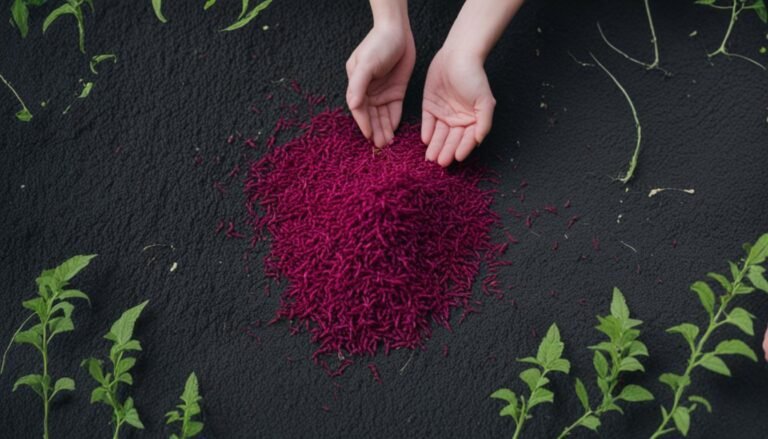Tasty Traditional Poppy Seed Rolls: Baking Bliss
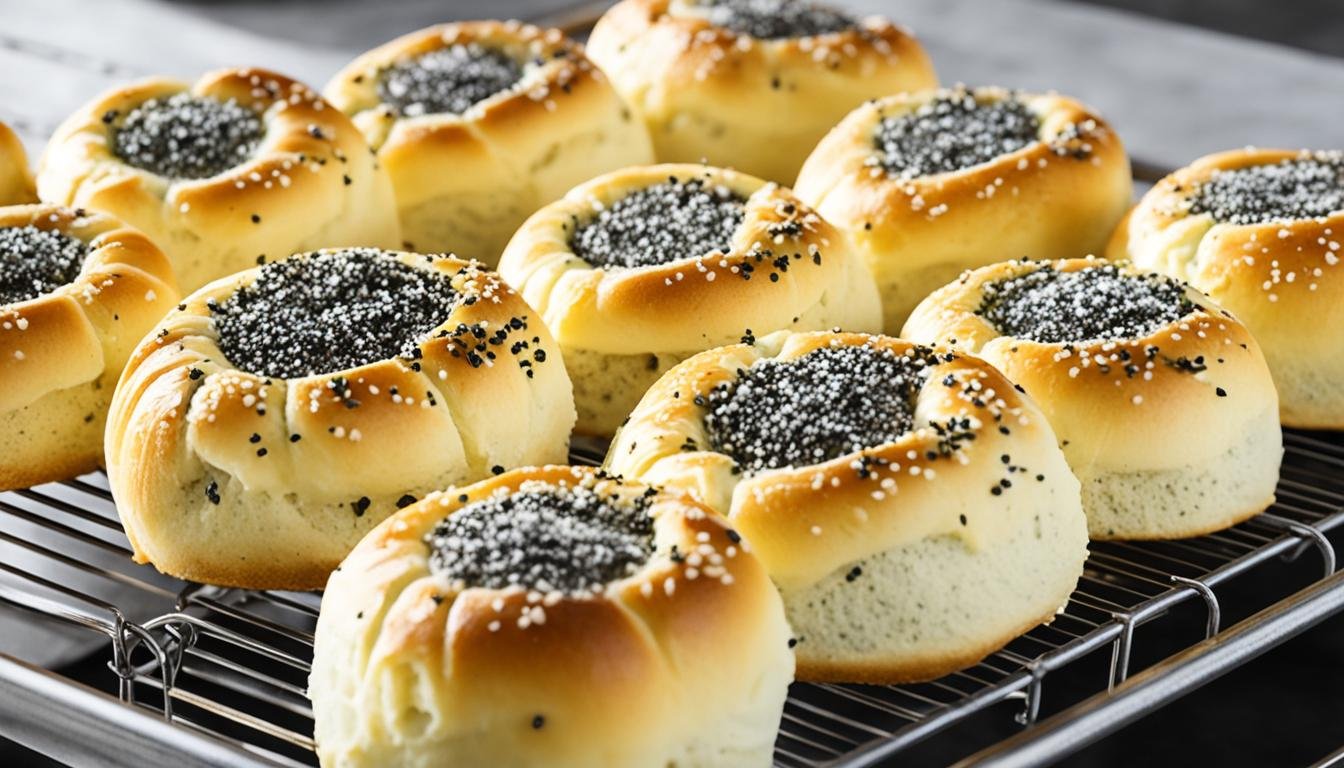
Traditional poppy seed rolls have been a favorite in Eastern European cultures for many years. They are known for their crunchy poppy seeds and soft texture. Making these rolls at home is a rewarding way to bring Eastern European baking into your kitchen.
Trying to connect with your cultural roots or just wanting a new flavor to enjoy? Learning to bake traditional poppy seed rolls is a fulfilling experience. The smell of fresh bread and the taste of poppy seeds take you straight to Eastern Europe with every bite.
Irresistible Flavors of Eastern Europe
Poppy seeds are a key ingredient in Eastern European cooking. They add a special crunch to many baked goods. These small seeds have a nutty taste that goes well with soft breads.
Poppy seed pastries are a big part of family celebrations. They bring together the region’s rich traditions and flavors.
Poppy Seed: Nature’s Delightful Surprise
Poppy seeds come from the opium poppy plant. It takes a lot of seeds to make just a gram. A pound can have up to 2 million seeds.
Poppy seeds have been used for centuries in many cultures. They are found in the food of Austria, India, and many other countries. These seeds are full of fiber, healthy fats, and minerals, making them great for baking.
Traditional Bread Recipes: A Journey Through Time
Making traditional poppy seed bread lets you connect with the past. You’ll enjoy the soft dough and crunchy filling. These treats bring you closer to the cultural heritage of the region.
Learning to make poppy seed rolls is rewarding. It’s a way to keep alive the flavors that have brought joy to families for years.
“Poppy seed roll is a traditional Eastern European dessert that is popular in Ukraine, similar to the popularity of cinnamon rolls in America.”
The recipe for poppy seed roll has been in the author’s family for a long time. Making it for over twenty years shows its lasting tradition and popularity.
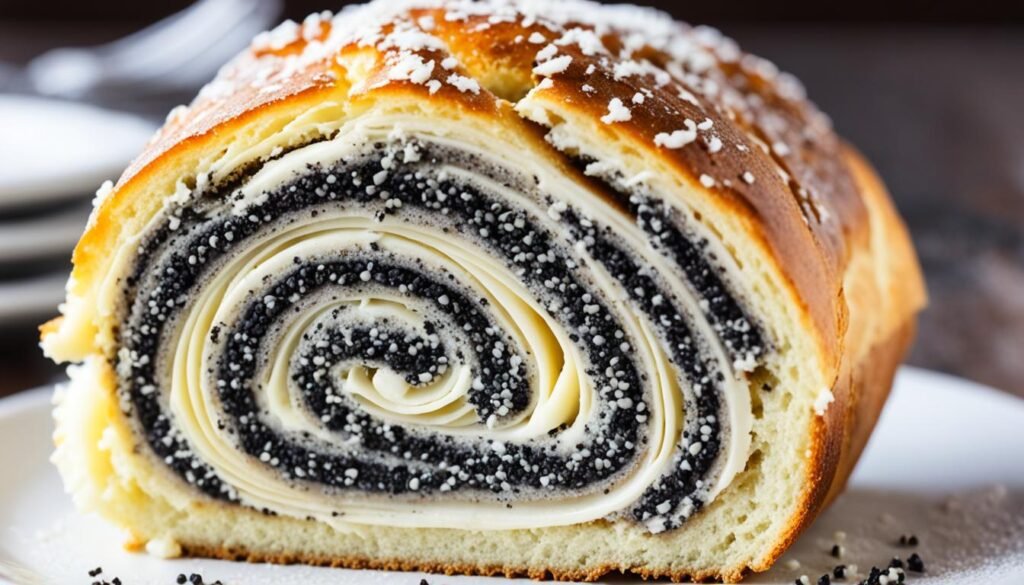
Mastering the Art of Poppy Seed Roll Baking
Making delicious poppy seed rolls at home needs patience, focus, and a love for traditional baking. Every step, from kneading to shaping and proofing, is key to the perfect texture and taste. By learning the techniques of traditional baking, you can make homemade bread that tastes like Eastern Europe.
Understanding the importance of kneading is crucial in poppy seed roll baking. This step develops the dough’s gluten structure, making it light and airy. You can knead by hand or with a stand mixer until the dough becomes smooth and elastic.
Shaping the dough into poppy seed rolls needs care and attention. Roll and coil the dough carefully to get the classic spiral pattern. During proofing, be patient as the dough rises and turns into a golden-brown delight.
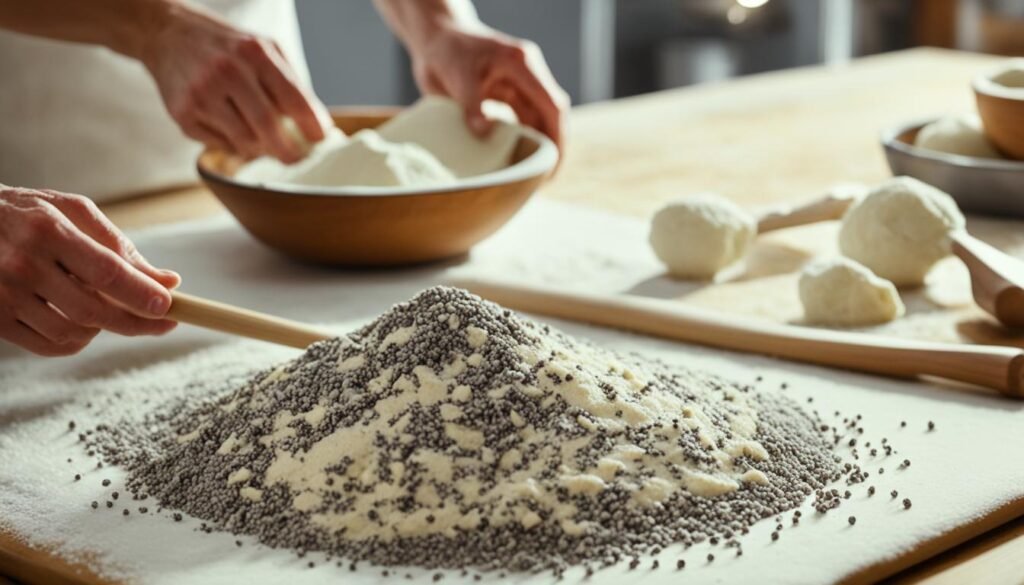
When baking poppy seed rolls, watch the temperature and timing closely. Getting a crisp outside and a soft inside needs knowledge of your oven and the recipe. With practice, you’ll make traditional baking wonders that will impress everyone.
Ingredients for Blissful Poppy Seed Rolls
Making traditional poppy seed rolls starts with picking top-notch ingredients. The key ingredient, poppy seeds, adds a special touch. Every part of the recipe is important for the best taste and feel.
Flour: The Foundation of Perfection
Choosing the right flour is key for poppy seed rolls. In Poland, type 550 “Luksusowa” flour is best. It makes the dough soft and chewy.
When mixing the dough, add flour bit by bit. This makes it easy to mix and get the right consistency. Knead the dough for 15 minutes to make it light and fluffy.
Poppy Seeds: The Star Ingredient
Poppy seeds are the main attraction in these pastries. They’re loved in Polish and Ukrainian baking for their crunch and nutty taste.
To make the filling, cook the poppy seeds with fruits, nuts, and spices. This makes a sweet, crunchy filling. Making the filling from scratch is best for an authentic taste.
| Ingredient | Amount |
|---|---|
| Poppy seeds, ground | 2 Cups |
| Hot, boiled water | 3/4 Cup |
| Walnuts (almonds or pecans), ground | 1/2 Cup |
| Sugar | 1 Cup |
| Honey | 2 Tablespoons |
| Vanilla extract | 1 teaspoon |
| Zest from one orange or lemon | 1 |
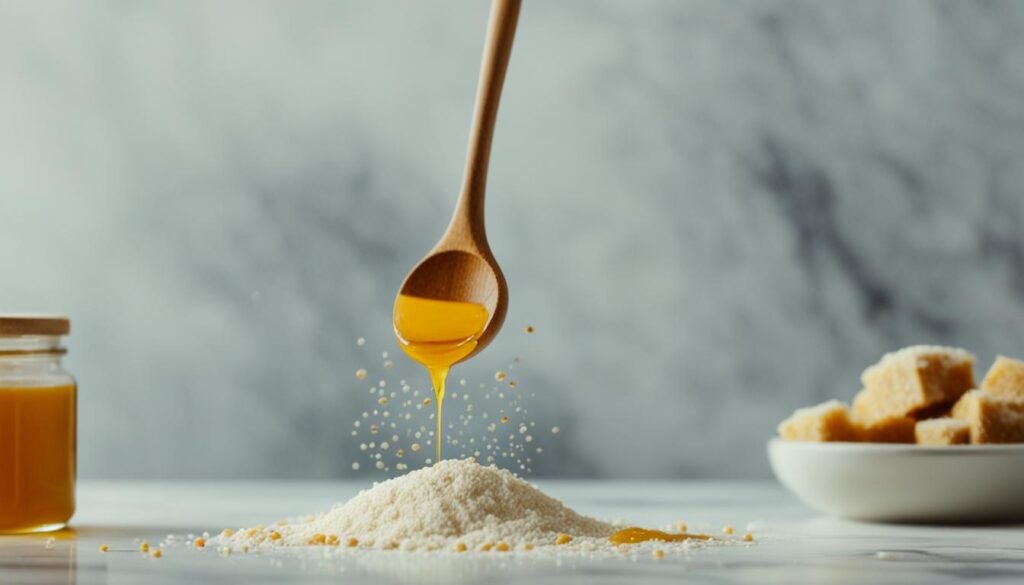
Knowing the role of each ingredient helps make your poppy seed rolls delicious. This way, you get the best mix of flavors and textures for a great baking experience.
Traditional poppy seed rolls
Traditional poppy seed rolls are a beloved pastry in Eastern European cuisine. They have been a favorite for generations. These soft, pillowy dough rolls are filled with a rich, crunchy poppy seed mixture. This mix of textures and flavors has won over many hearts and taste buds.
These rolls are perfect for breakfast, a mid-day snack, or a holiday treat. They bring a taste of the region’s rich culinary heritage to your table.
Making traditional poppy seed rolls is a labor of love. It takes patience and care. The dough is kneaded and let to rise. Meanwhile, the poppy seed filling is simmered to perfection. It blends the nutty, earthy taste of the seeds with sweetness and spice.
The final product is a feast for the senses. The golden-brown crust opens to a soft, pillowy interior and a delicious filling. It’s a treat you won’t forget.
| Prep Time | Cook Time | Additional Time | Total Time | Servings | Yield |
|---|---|---|---|---|---|
| 20 mins | 30 mins | 2 hrs | 2 hrs 50 mins | 16 | 2 loaves |
These traditional poppy seed rolls are more than just a treat. They honor the rich cultural heritage of Eastern Europe. By baking them, you bring a piece of the region’s traditions into your home. It’s a memorable experience for you and your loved ones.
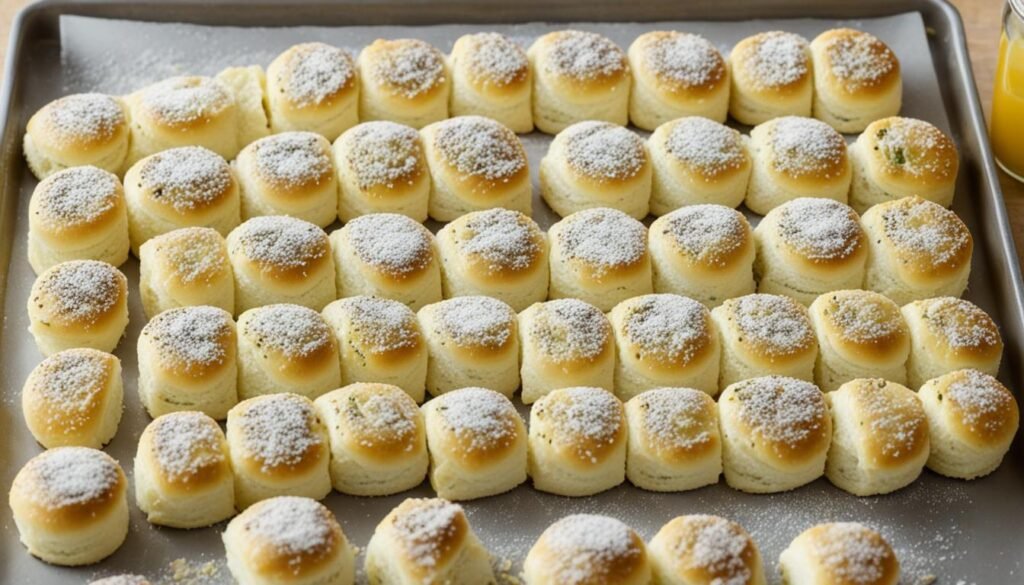
Whether you’re an experienced baker or new to Eastern European pastries, learning to make traditional poppy seed rolls is rewarding. With the right ingredients and patience, you can create these beloved treats. They’ll take you on a journey to the heart of the region’s culinary heritage.
Preparing the Dough: A Labor of Love
Making traditional poppy seed roll dough is a labor of love. It takes time, patience, and a keen eye for detail. The dough preparation is key to getting that soft, pillowy texture we all love.
Kneading: The Secret to Fluffy Rolls
Kneading is at the core of this process. It develops the gluten structure, making the rolls light and airy. With practice, you can make your homemade fluffy rolls a treat for the senses.
The dough includes enriched flour, eggs, butter, and milk. These ingredients make the rolls soft and tender. Proper kneading activates the gluten in the flour. This makes the dough smooth, elastic, and able to keep its shape while rising and baking.
- Start by mixing dry ingredients like flour, yeast, sugar, and salt in a big bowl.
- Then, add wet ingredients like milk, eggs, and melted butter. Mix until it forms a shaggy dough.
- Move the dough to a floured surface and knead for 10-15 minutes. Use your heel to push the dough away and fold it back.
- Knead until the dough is smooth, elastic, and doesn’t stick to the surface.
- Put the dough in a greased bowl, cover it, and let it rise for 1-1.5 hours. It should double in size.
“The secret to light, fluffy poppy seed rolls lies in the kneading process. Spend the time to develop that gluten, and you’ll be rewarded with a pastry that melts in your mouth.”
With patience and practice, you’ll get the kneading right. Your poppy seed rolls will impress everyone. The smell of fresh dough and the taste of these traditional pastries will be worth the effort.
Shaping and Proofing: The Art of Patience
Making traditional poppy seed rolls needs a gentle touch and lots of patience. The shaping is where the baker’s skill really shows. They carefully shape the dough into the classic spiral or more complex designs.
Evenly spreading the poppy seed filling is key to success. The baker must roll and shape the dough carefully. This makes sure the filling is spread out well. It also makes the rolls look great and taste balanced.
The proofing stage lets the dough rise and get its special texture. This step needs careful watching and patience. Getting the timing right is important for the right rise and crumb. Bakers who get this right make rolls that show off Eastern European baking traditions.
- Gently shape the dough into the desired form, such as a spiral or intricate design, with care taken to evenly distribute the poppy seed filling.
- Allow the dough to proof, carefully monitoring the timing to ensure the perfect rise and texture.
- Embrace the patience and attention to detail required in this stage, as it is essential for creating the perfect poppy seed rolls.
“Shaping and proofing the dough for traditional poppy seed rolls is a delicate dance, requiring a gentle touch and unwavering focus. It’s where the true essence of the baker’s craft is revealed.” – Reva Castillenti, New York City Bread Baker
Learning to shape and proof poppy seed rolls takes time and patience. But it’s worth it for the beautiful pastries that come out. These rolls are not just pretty; they’re full of the nutty flavors loved by many. This careful process keeps the tradition alive, making these rolls a favorite in Eastern Europe.
Baking to Golden Perfection
The final step in making traditional poppy seed rolls is baking. Here, the dough turns into a golden, fragrant treat. Getting the temperature and timing right is key for a crisp, golden crust and a soft inside. By mastering baking techniques, you can make poppy seed rolls that are perfectly baked. They will have a great smell and a texture that’s sure to please.
Temperature and Timing: Crucial Elements
For the best poppy seed roll baking, you need to balance temperature and timing. Here are some important tips:
- Heat your oven to 356°F (180°C) to 375°F (190°C). This temperature range helps the dough bake evenly. It makes the rolls golden-brown outside and soft inside.
- Bake the rolls for about 25-30 minutes. Watch them closely to stop them from getting too dark. Use a digital thermometer to check if they reach 190°F (88°C) inside.
- Turn the baking sheet halfway through baking to make sure the rolls brown evenly on all sides.
- If the rolls are browning too fast, cover them with foil. This stops them from getting too dark while they finish baking inside.
By using these temperature and timing tips, you can get the rolls just right. They’ll have a crisp, golden crust and a soft inside. This makes a batch of traditional poppy seed rolls that are truly irresistible.
“Baking is as much a science as it is an art, and mastering the temperature and timing of your poppy seed rolls is the key to unlocking their full potential.”
Serving and Savoring Poppy Seed Rolls
Warm and Comforting: A Taste of Tradition
The joy of baking poppy seed rolls is in serving and enjoying them. These pastries are best when warm or at room temperature. They bring back memories of Eastern European traditions. The soft dough and crunchy poppy seeds make a unique taste experience.
Sharing these rolls with others connects you to cultural traditions. It’s a way to keep the tradition alive. These treats are a big part of baking culture.
The smell of fresh poppy seed rolls brings comfort. Their golden-brown tops and poppy seeds look inviting. Sharing these traditional pastries brings joy and a sense of comfort food.
When you take a bite of a warm roll, it’s a treat. The dough is soft, and the poppy seeds add a nutty flavor. Each bite brings back memories and connects you to the past.
Poppy seed rolls are great for snacks, coffee, or holidays. They show how much people love traditional pastries. Sharing these recipes with others deepens our love for comfort food. It’s a way to keep traditions alive and spread joy.
Variations and Twists on the Classic
Traditional poppy seed rolls are a favorite, but there’s always room for new ideas in baking. You can try unique fillings or modern flavors to make them your own. Adding cheese, herbs, chocolate, or citrus can make them special. Just remember to keep the poppy seed roll’s traditional taste in mind.
The poppyseed babka with white chocolate filling is a tasty twist. It has a buttery dough with creamy white chocolate and lots of poppy seeds. Adding lemon or orange zest gives it a fresh touch.
For a sweet start to the day, try morning rolls with a cream cheese glaze. These rolls are fluffy and full of poppy seeds. The cream cheese glaze adds a tangy flavor that goes well with the poppy seeds.
| Variation | Ingredients | Baking Time |
|---|---|---|
| Poppyseed Babka with White Chocolate Filling | – Enriched dough with eggs, butter, and sugar – White chocolate filling – Generous sprinkle of poppy seeds | 30-40 minutes at 375°F |
| Morning Rolls with Cream Cheese Glaze | – Poppy-studded dough – Tangy cream cheese glaze | 20-25 minutes at 400°F |
These variations let you make the poppy seed roll your own. Get creative with your baking and show off your skills!
“Baking is like painting or writing a song. It’s not just about following a recipe – it’s about expressing yourself.”
Poppy Seed Rolls: A Beloved Bakery Favorite
Traditional poppy seed rolls are a staple in Eastern European bakeries. They are loved for their unique flavors and textures. Making these rolls at home lets you enjoy their delicious taste and keep a tradition alive.
Holiday Baking Traditions
Poppy seed rolls are key to holiday baking in many places. They connect us to our culinary past. Harvesting and drying poppy seeds in summer is a tradition that has lasted for generations.
In Slovakia, poppy seeds are a big part of baking. The recipe for these rolls makes a lot, just like in old Eastern European bakeries. You’ll need butter or margarine, wheat flour, milk, egg, baking powder, sugar, poppy seeds, vanilla sugar, honey or jam, hot milk, and lemon zest.
Making the dough and baking the rolls is an art. Each roll is shaped by hand and baked until golden. The recipe makes 48 rolls, showing how important they are in local traditions.
Poppy seed farming has decreased in some areas due to European rules. But, people still love these rolls. Bakeries and home cooks are working to keep this tradition alive.
“The poppy seed povitica reminds me of my grandmother’s recipe and the memories of our family gatherings. It’s a taste of tradition that I cherish.”
Customers really like traditional poppy seed rolls. They give them a high rating, showing they’re a favorite. With an average 4.94 rating from 30 votes, it’s clear people enjoy these treats.
Conclusion
Baking traditional poppy seed rolls at home is a rewarding experience. It lets you connect with Eastern Europe’s rich culinary traditions. Mastering this art opens a world of flavors and textures loved for generations.
Every step, from picking ingredients to baking, immerses you in the heritage of these pastries. Whether you stick to the classic recipe or try new variations, the joy of tasting the warm, fragrant rolls is unmatched. This journey deepens your love for traditional baking and its comforting flavors.
So, put on your apron and start baking! This is your chance to connect with the past and make memories. Enjoy the timeless pleasure of baking these rolls at home. Let their aroma fill your kitchen with the spirit of a rich cultural heritage.
FAQ
What are traditional poppy seed rolls?
Traditional poppy seed rolls are a favorite pastry from Eastern Europe. They mix the crunch of poppy seeds with soft homemade bread. These rolls have been a big part of family traditions and holiday meals for many years.
What is the significance of poppy seeds in Eastern European baking?
Poppy seeds are a key ingredient in Eastern European baking. They add a unique crunch to many baked goods. These small seeds have a nutty taste that goes well with the softness of traditional breads.
What are the key steps in mastering the art of baking traditional poppy seed rolls?
Baking traditional poppy seed rolls takes patience and a love for bread making. You need to knead the dough carefully, shape it just right, and bake it perfectly. This ensures the rolls have a great texture and taste.
What are the essential ingredients for traditional poppy seed rolls?
To make traditional poppy seed rolls, you need quality ingredients. Flour is the base, and poppy seeds add a crunchy, nutty flavor.
How can you achieve the perfect texture and flavor in homemade poppy seed rolls?
For perfect poppy seed rolls, focus on traditional dough preparation, shaping, proofing, and baking. Each step is important for a light crumb and a rich, crunchy filling.
What are some creative variations on the traditional poppy seed roll recipe?
Traditional poppy seed rolls are a classic, but you can also try new things. Add unique fillings or mix in modern flavors to make them your own. This lets you add a personal touch to this beloved pastry.
Why are traditional poppy seed rolls a beloved bakery favorite?
Poppy seed rolls are a favorite in bakeries because of their delicious taste and comforting texture. They’re a big part of holiday traditions, connecting families to their culinary heritage.




